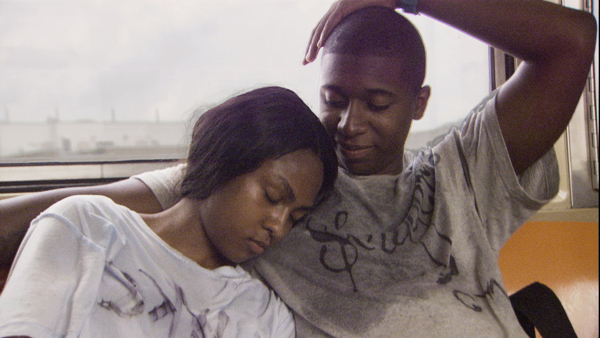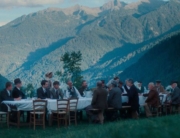Gimme the Loot is a movie that would suffer from being any more polished. Its imperfections lend it both charm and a quiet formal ingenuity. As two energetic teens saunter, run, and climb through the summery urban landscape—trading banter like they had grown up on a diet of Woody Allen and Biggie Smalls—their vitality makes light of any momentary dark spots. It is both realistic and pure fantasy, which feels just right for a film that traffics in the infectious charisma of youth.
Malcolm and Sofia, two graffiti artist teens, are on their quest to “bomb the apple,” aka tag the sign that is displayed when the Mets hit a home run. It’s a uniquely New York task, which allows writer-director Adam Leon to lavish attention on the city. He evinces a native’s affection for the Big Apple in every frame, presenting a picture of the city that seems at once casual and studied. The dialogue follows similar patterns, revolving around urban distinctions (Citi Field vs. Shea Stadium, Brooklyn vs. Queens) that can seem either meaningless or all-important, depending where you’re standing.
Which is all over the place, for our two protagonists. As they sprint from borough to borough, they encounter hijinks and complications familiar from childhood and other movies, all within a realm of illegality so casual it’s infatuating. There’s never any particular sense of consequence or urgency. The plot gives us an excuse to spend time with characters portrayed with a delicate artifice that is endearing rather than distancing. The warmth and conviviality are hard to resist.
But nothing would work if the two young stars did not deliver, and thankfully they do. Ty Hickson and Tashiana Washington share an easy, affectionate rapport and sense of comic timing. Hickson moves through the film with loping strides, his grin and gangly limbs flailing and subsuming the occasional awkwardness of the performance into his physicality. His combination of swagger and earnestness is immediately recognizable to anyone who has spent time with a teenager, or can remember being one. A scene where he and a new acquaintance fumble towards romance is a pitch-perfect distillation of youth, pot, and desire. Theirs is a near-utopian reality where the issues of race and class all but vanish. It’s a fantasy that is slyly acknowledged in a later scene between the two of them, one that hints at the deeper issues lurking around the edges of the film.
But it is Washington who is the real star and a genuine find. She exudes a physical and mental toughness, effortlessly laying claim to both her femininity and her right to be one of the boys. If her performance lacks the technical polish of an experienced actor, it is to the film’s benefit. She moves through New York and the film like a small force of nature, surveying the proceedings with a face alternately streetwise and regal.
Also worth noting is Meeko’s performance as Champion, a hustler who has been around the block more than a few times. His effortless presence brings a needed jolt of genuine danger to proceedings that are occasionally too laid-back for their own good.
The film is shot with industrious loveliness by Jonathan Miller, who lets a pretty haze of sunlight percolate over the city. The tone and color constitute the film’s most lasting impact, an effervescent sense of time and place. If the film occasionally makes you wish for more—a scene where Malcolm returns home serves only to remind us how little we know about him—it is easily forgivable. Director Adam Leon keeps his sights squarely focused on two vibrant young lives, and turns limitations into strengths with a film as charmingly flawed as its subjects.







Leave A Comment